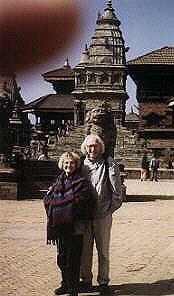In postcolonial discourse, tourism tends to be seen as the ultimate example of Debordıs "society of the spectacle" (1983) or what Eco describes as "travels in hyper reality" (1986). One of the earliest theoretical formulations of cultural tourism was that of Boorstin (1964), who argues that Americans cannot experience reality and must feed from "pseudo-events" (1964, 77117; cf. Cohen 1988). Boorstinıs chief claim is that the modern tourist is just a passive onlooker who seeks to enjoy the extravagantly strange from the security of the familiar. Isolated from the host environment and the local people, tourists travel in guided groups and thrive on contrived attractions, gullibly enjoying the pseudo-events while blithely disregarding the real world around them. Boorstin argues that this is ethically wrong because tourism dehumanizes and destroys the cultural integrity and richness of an area.

The postcolonial critique sees the tourist as one of the most virulent viruses of neoimperialism, the foot soldier of late capitalism. Tourism turns people into commodities. On the one hand, "the native" becomes an exotic living other. "As far as the tourists are concerned, the inhabitants of exotic places are not human beings but rather zoological objects" (Cohen 1983, 365). As such, "tourists are cannibals of culture" (Adler 1989, 353). Furthermore, poor countries are forced to "prostitute themselves" (both literally and metaphorically ) (de Kadt 1979, 63).

Conversely, for the local residents, the tourist becomes a walking dollar sign, an means to a certain goal. In both cases, the personıs humanity is washed out of the equation.
Moreover, as Kunwar argues (1997), mass tourism is no longer considered a blessing for Third World countries. It brings in less income than expected and the population is not better off for it. The tourists lay siege to scarce resources, but little money ends up in the country, and especially does not end up in the hands of the non-elites. Tourism makes the rich richer and the poor poorer and brings economic growth without development and sustainability (Kunwar 1997, 174). Furthermore, tourism brings about rapid changes in local authority and land use (Nunex 1963, 152 ) and affects religious activities and institutions (Barker 1982). Festivals may be moved to new times, content changed. Religious artifacts may be sold (Fisher 1990).


